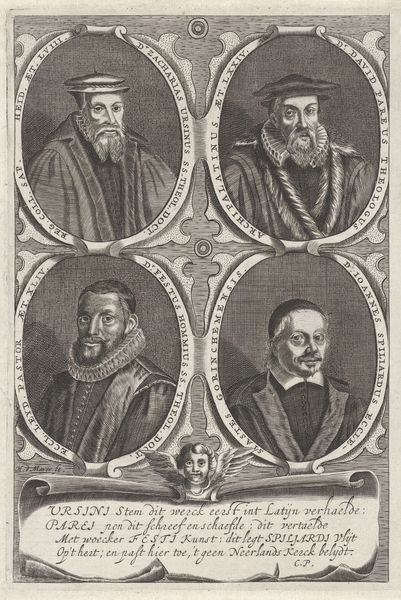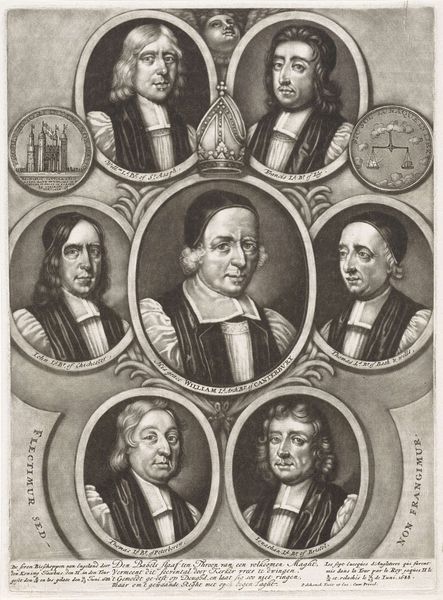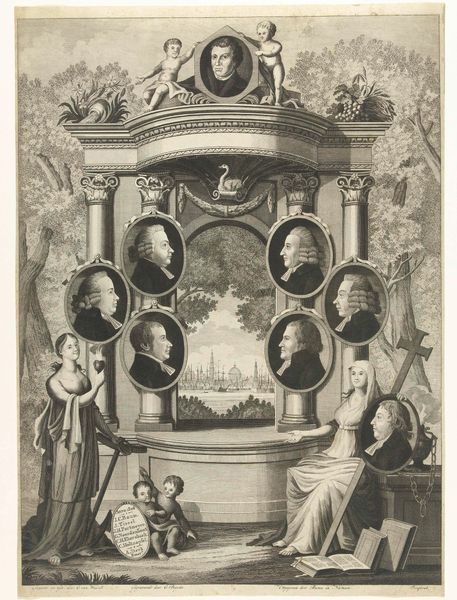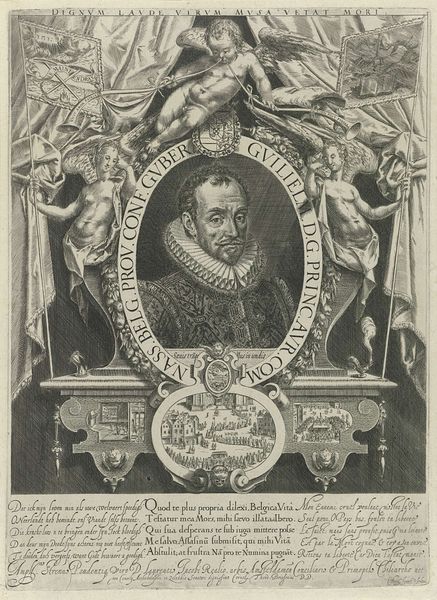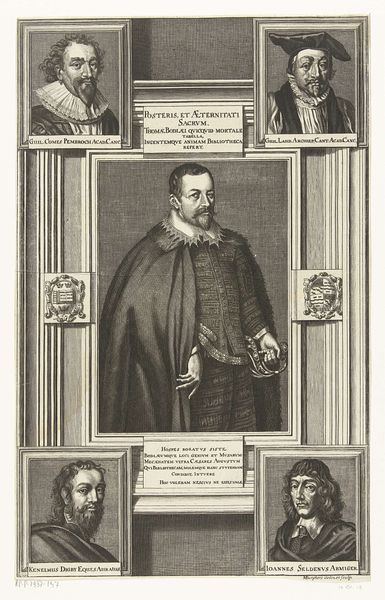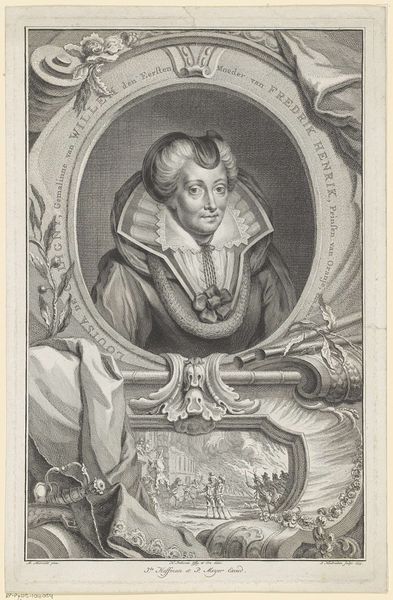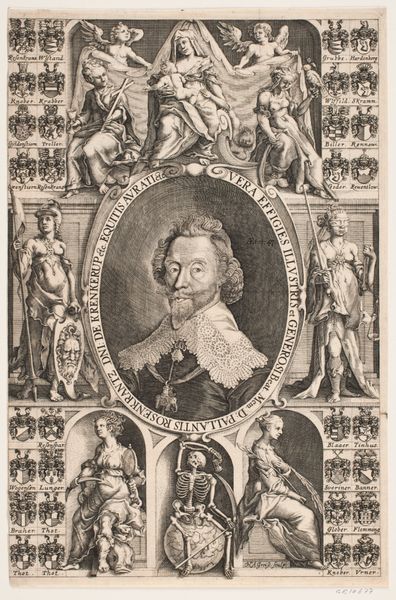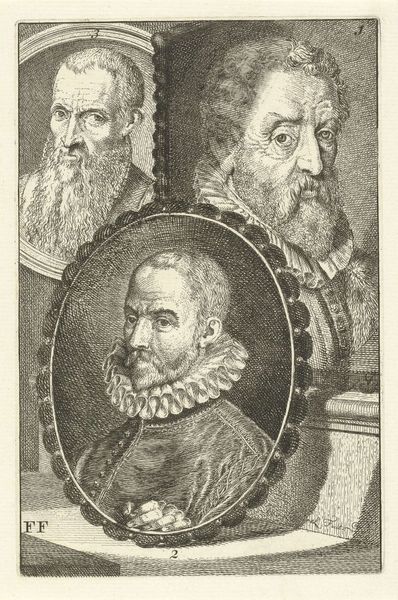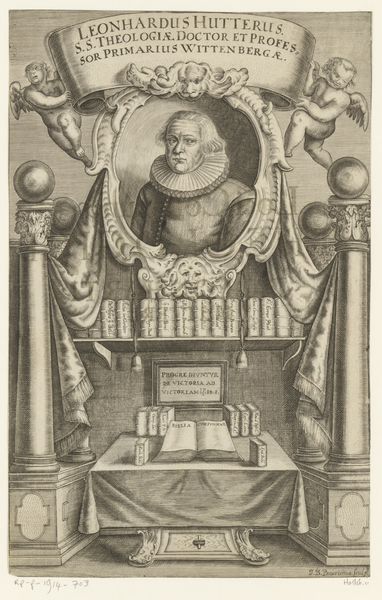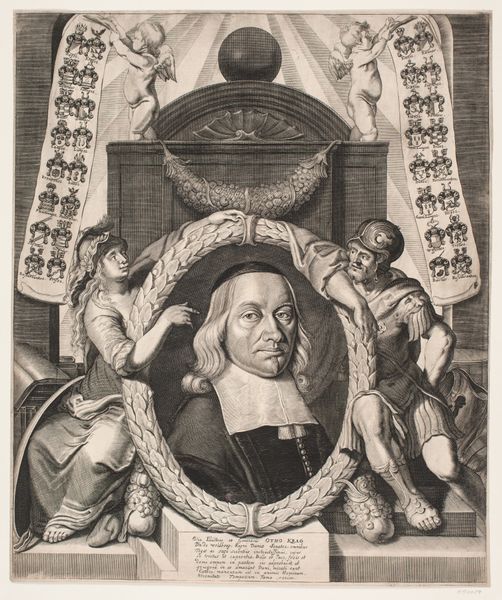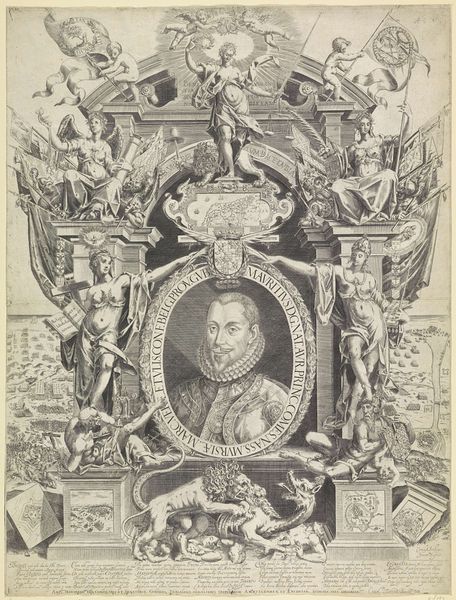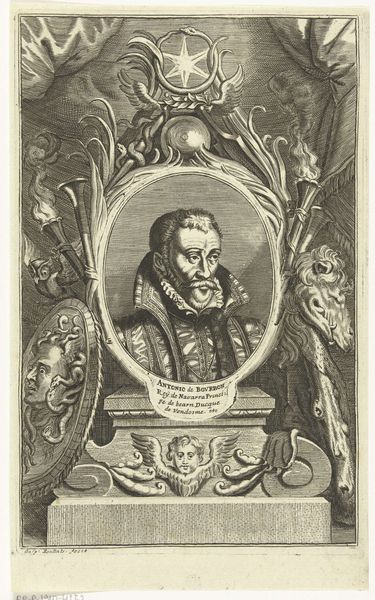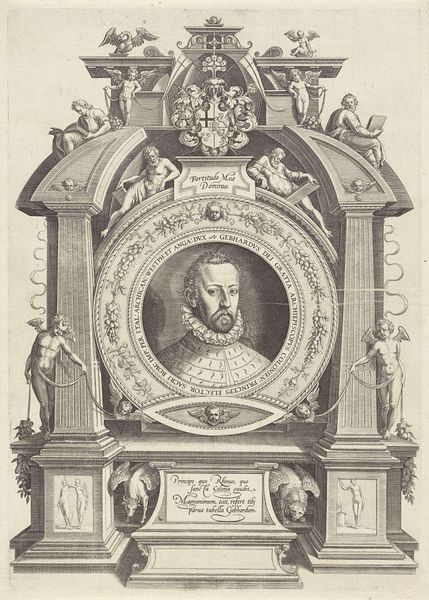
drawing, print, paper, ink, engraving
#
portrait
#
drawing
#
baroque
# print
#
figuration
#
paper
#
ink
#
group-portraits
#
history-painting
#
engraving
#
monochrome
Dimensions: height 442 mm, width 288 mm
Copyright: Rijks Museum: Open Domain
Curator: This intriguing engraving is titled "Portraits of Seven Bishops of England," created after 1688 by Adriaen Haelwegh. It depicts, as you might guess, seven rather solemn-looking bishops arranged within an ornate, swirling frame. Editor: My first impression? A formidable cluster of faces, all framed like precious relics. They seem quite severe; perhaps they just had a bad batch of communion wine. Curator: Or perhaps their severity stems from the historical context. These are the bishops who petitioned against King James II's Declaration of Indulgence. Editor: Ah, politics! The ever-present fly in the ointment. It seems this print was created to commemorate their imprisonment and subsequent acquittal. That certainly changes the emotional landscape. The ornament almost feels like bars. Curator: Precisely! Notice how each bishop is identified beneath their portrait. Haelwegh’s skill shines in the details – the individual expressions, the textures of their vestments rendered through intricate lines. Editor: There's also a fascinating duality here. Above all this intensity there is a floating cherub and below medallions emblazoned with symbolism; what is that intended to represent? Curator: Yes! The text on either side translate to “we are bent but not broken”. It highlights their loyalty despite facing potential danger. Editor: Fascinating to consider how an image like this served as both a historical record and a piece of propaganda in a turbulent time. Did these engravings play a significant role in shaping public opinion, or were they more of a celebratory keepsake? Curator: Prints like this certainly circulated widely and contributed to the ongoing debates. Remember, this was a period rife with religious and political tension, and imagery was a powerful tool. Museums today continue that work, hopefully without bias but simply informing audiences about the world and its complex past. Editor: Looking at the central portrait, the intensity in the central figure's gaze is compelling, I'd even go as far as to say... magnetic? I see a sense of resolve. That subtle nuance is something you just don't gather without close, careful observation. Curator: A lasting thought indeed! These 'Portraits of Seven Bishops of England’ remind us of the intertwined nature of faith, power, and artistic expression during this period. Editor: Absolutely. Each carefully etched line serves as a window into a time of turmoil, where portraits served not just to reflect appearances, but to boldly pronounce allegiances and resist injustice.
Comments
No comments
Be the first to comment and join the conversation on the ultimate creative platform.
